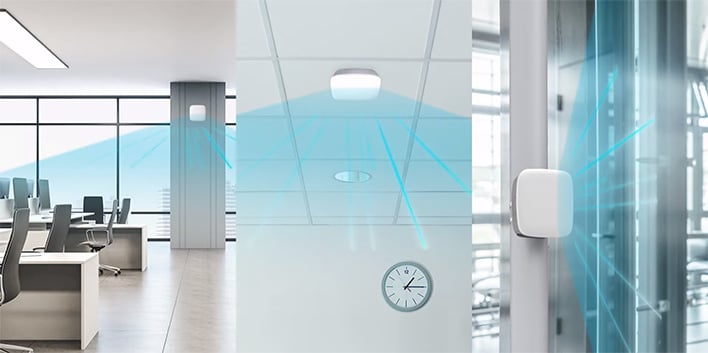Samsung's Link Cell Is The Cure For 5G MmWave's Crummy Performance Indoors

We have all heard the tantalizing promises of 5G connectivity—faster speeds, lower latency, and a new era of experiences made possible by its benefits over 4G and earlier standards, if you have a 5G phone or other device. The problem is that those benefits do not necessarily reach their full potential indoors. That is where Samsung's new Link Cell technology comes into play.
When it comes to 5G connectivity, millimeter Wave (or mmWave) is where it is at, for the fastest performance. It is the high band solution with the best speeds, but it has some downsides. It does not extend as far out from cell towers as mid-band and low-band 5G solutions, and can have issues penetrating buildings and walls. To remedy this for businesses, Samsung today unveiled a new integrated 5G mmWave small cell for indoor use, called Link Cell.
"The first version of Samsung’s Link Cell will support 28GHz and has the capability to combine four 100MHz bandwidth of frequencies, offering high capacity and ultra-fast download speeds. Moreover, it brings together a radio, antenna and digital unit into one compact box, and is less than 4 liters in volume, one of the smallest in the industry," Samsung explains.
Link Cell is small and unassuming, allowing units to be discreetly placed on walls, ceilings, and other areas without sticking out like a sore thumb. Samsung also says it is capable of self-adjusting for optimal RF performance, to maintain high quality connections—it's not a problem for applications to transition from a macro 5G network outside to the indoor network served by Link Cell.
This is not a home solution, or at least not yet. It is intended for business with existing Distributed Antenna Systems (DAS) that provide low-band and mid-band 5G service across a facility.
Link Cell leverages Qualcomm's 5G RAN platform. Verizon will be the first US carrier to deploy Link Cell, to extend the footprint of its 5G Ultra Wideband network. And as you might imagine, Verizon is excited about this.
"Verizon continues to rapidly advance our 5G deployment, and the addition of indoor cell sites will extend the availability of the fastest 5G service in the US. This is a key step in providing industry-changing, scalable, latency-sensitive, robust 5G solutions for enterprises," said Adam Koeppe, Senior Vice President of Technology Planning and Development at Verizon.
While not for home use, this could be a boon if public facilities and consumer hot spots grab hold of this, like shopping malls and the like.

